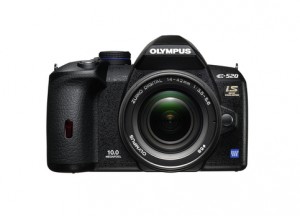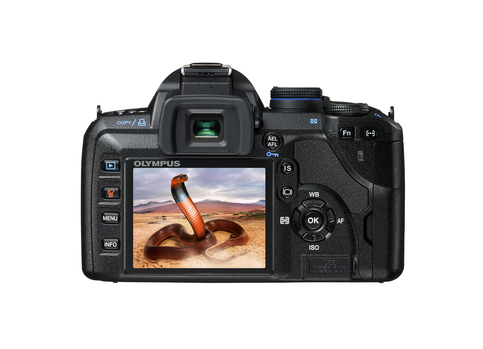
The new Canon PowerShot SX1 IS and SX10 IS jointly replace the S5IS. The new SX1 IS features a 20x zoom lense with built-in image stabilization and is not available in the US (Update March 2009: the SX1 IS has been released in the US, you can read more about it on Photography Bay’s Canon PowerShot SX1 IS Reviews and Resources). You’ll need the stabilizer too, because the lens is the 35mm equivalent of 28-520mm.
Canon PowerShot SX10 IS Reviews
Don’t underestimate the PowerShot SX10 – it’s a great and very capable camera. If you like the SX1 a lot but don’t need its full HD 1080p movie mode and 4 FPS burst mode, then you can get the very similar Canon PowerShot SX10 for a lot less money.
A nice evolution of the megazoom, the Canon PowerShot SX10 IS delivers some improvements over its predecessor and provides an attractive option for megazoom shooters.
The PowerShot SX10 IS is an expensive and quite complex camera, and not really suited for the beginner, however in capable hands it is capable of producing excellent results, and has enough creative versatility to do so in a wide range of situations.
From a technical viewpoint, the Canon SX10 IS finds itself on a high level. The camera does prove itself and delivers sharp pictures with natural colors, all of which with extensive users ease.
The camera offers good shutter and AF performance, good image color and quality, and a simple and easy to use movie capability for those who are so inclined.
A sturdy plastic brick of a camera, the Canon PowerShot SX10 IS builds on its S5 predecessor chiefly with that bigger and better lens range, though ease of use has also been improved.
Canon PowerShot SX1 IS Key Features
- 10mp CMOS sensor
- 20x Zoom (28-560mm equivalent)
- Articulating LCD
- Hotshoe (for external flash)
- DIGIC 4
For further details on the SX1 IS and SX10S, see the press release below.
Canon PowerShot SX1 IS and SX10 IS Press Release
United Kingdom / Republic of Ireland, 17 September 2008: Canon today supercharges its PowerShot digital compact camera range with two powerful new models: the 10 Megapixel PowerShot SX1 IS and PowerShot SX10 IS, which jointly replace the PowerShot S5 IS.
Both raise the benchmark for compact zooms with an outstanding 20x wide-angle (28mm) optical zoom, with USM and VCM for fast, silent, zooming. The PowerShot SX1 IS offers a revolutionary series of features never seen before on a Canon compact camera – a 10 Megapixel Canon CMOS sensor, 4 frames per second continuous shooting, and full HD movie capture – while both cameras use Canon’s new DIGIC 4 processor for fast performance and richly detailed, clean images in a wide range of shooting situations.
Unbeatable reach
With a Canon 20x wide-angle (28mm) optical zoom lens, the PowerShot SX1 IS and PowerShot SX10 IS tackle everything from long-range telephoto shots to sweeping landscapes. Canon’s Ultrasonic Motor (USM) combines with Voice Coil Motor (VCM) technology for near-silent operation and the speed for sports or wildlife subjects. And thanks to Canon’s optical Image Stabilizer – which now offers a 4-stop advantage – camera shake blur is avoided even with the zoom fully extended.
10 Megapixel power
The PowerShot SX1 IS and PowerShot SX10 IS feature resolutions of 10 Megapixels, capturing all the necessary detail for poster-size prints or creative cropping in post processing. A Canon CMOS sensor allows the PowerShot SX1 IS to shoot full-resolution JPEGs at speeds of up to 4fps – making it a powerful, pocket-sized tool ideal for capturing fast-paced action sequences.
High Definition moviemaking
For the ultimate in visual quality, the PowerShot SX1 IS delivers 1080p (30fps) High Definition video – ready for instant playback on any HDTV via a built-in HDMI connection. The PowerShot SX10 IS offers fun, spontaneous VGA movie shooting. Movies on both cameras are enhanced with CD quality stereo sound, optical zooming and Face Detection Technology; and if extra reach is required, the PowerShot SX1 IS includes Canon’s Advanced Tele-Converter for an extra 2x zoom with no loss in movie quality.
DIGIC 4: intelligent processing for better photos
The PowerShot SX1 IS and PowerShot SX10 IS both feature Canon’s new DIGIC 4 image processor. As well as ensuring ultra-fast operation and superb, low-noise images, DIGIC 4 drives several intelligent technologies that make great photos easier than ever.
People shots benefit from improved Face Detection Technology, which even detects faces positioned at an angle to the camera, or in profile. Face Select & Track tracks a specific subject even more accurately, while a new FaceSelf-timer function – which automatically triggers the shutter shortly after a new face enters the frame – makes group shots and self-portraits easy.
Canon’s improved Motion Detection Technology delivers fantastic, sharp results by registering camera and subject movement, then automatically adjusting ISO to prevent image blur. Blur is further guarded against by new Servo AF, which continuously adjusts focus on subjects moving towards or away from the camera.
DIGIC 4 also powers Canon’s new i-Contrast feature, which brings out great, natural-looking detail in dark areas of pictures – without blowing out lighter areas.
Total Control
For the ultimate creative precision, the PowerShot SX1 IS and PowerShot SX10 IS offer full manual control over both aperture and shutter speed. A Multi Control Dial offers fingertip access to all key settings. Plus, compatibility with a range of accessories – including Canon’s professional Speedlite EX flash units – extends creative potential even further.
Also included with the PowerShot SX1 IS is Canon’s WC-DC300 controller, which allows wireless control of shooting and playback. This is ideal for tripod shots at slow shutter speeds, or any situation where keeping a distance from the camera is preferable.
“Both of these cameras offer exceptional imaging possibilities,” said Mogens Jensen, Head of Canon Consumer Imaging, Europe. “In particular, the PowerShot SX1 IS genuinely redefines what a compact digital camera can do. This kind of power and versatility must be experienced to be believed.”
Pricing & Availability
The PowerShot SX1 IS is available from December priced at £519.99 / €679.99 RRP inc VAT
The PowerShot SX10 IS is available from October priced at £359.99 / €469.99 RRP inc VAT
Features at a glance:
- 20x wide-angle (28mm, f/2.8) optical zoom with optical Image Stabilizer
- 10.0 Megapixels
- Canon CMOS sensor for full resolution continuous 4fps shooting (PowerShot SX1 IS)
- Full HD (1080p, 30fps) movies plus HDMI output (PowerShot SX1 IS)
- DIGIC 4 for outstanding images and fast response times
- Shooting modes include full manual control
- Great people shots with Face Detection AF/AE/FE/WB plus Face Select & Track and FaceSelf-Timer
- Targets every possible cause of blur with High ISO Auto, optical Image Stabilizer, Motion Detection Technology and Servo AF
- Auto Red-Eye Correction in shooting and playback
- i-Contrast boosts brightness and retains detail in dark areas
- 2.5” vari-angle LCD II with wide viewing angle plus electronic viewfinder (PowerShot SX10 IS)
- 2.8” widescreen vari-angle LCD II with wide viewing angle (PowerShot SX1 IS)
- Multi Control Dial and customizable My Menu
- Smooth, 30fps VGA movies (PowerShot SX10 IS)















 The S860 incorporates a Function Description feature. Designed to reduce the intimidation factor of the camera’s various modes, Function Description automatically provides a brief and easy to understand description of each setting when scrolling through the cameras’ menus, helping the end-user determine which setting is appropriate for their current shooting scenario. Additionally, with 11 scene modes to choose from, including Night, Portrait, Children, Landscape, Close-Up, Sunset, Dawn, Backlight, Fireworks, Beach & Snow, and Self Portrait.
The S860 incorporates a Function Description feature. Designed to reduce the intimidation factor of the camera’s various modes, Function Description automatically provides a brief and easy to understand description of each setting when scrolling through the cameras’ menus, helping the end-user determine which setting is appropriate for their current shooting scenario. Additionally, with 11 scene modes to choose from, including Night, Portrait, Children, Landscape, Close-Up, Sunset, Dawn, Backlight, Fireworks, Beach & Snow, and Self Portrait. The S860 also boasts a special effects “E” button, which gives you instant access to a host of creative controls, including options for resizing and rotating images, adjusting brightness, contrast and saturation levels, fixing red eye, and manipulating color such as saving captured images as B&W, Sepia, Red, Blue, Green, and Negative.
The S860 also boasts a special effects “E” button, which gives you instant access to a host of creative controls, including options for resizing and rotating images, adjusting brightness, contrast and saturation levels, fixing red eye, and manipulating color such as saving captured images as B&W, Sepia, Red, Blue, Green, and Negative.